Study the experimental set given below and answer the following questions :
What is the purpose of keeping potassium hydroxide solution in the test tubes X and Y?
Step-by-Step Solution:
1. Understanding the Experiment Setup:
- The experiment involves two test tubes (X and Y) containing different types of peas: germinating peas in test tube X and boiled peas in test tube Y. Both test tubes contain potassium hydroxide (KOH) solution at the bottom.
2. Identifying the Role of Potassium Hydroxide:
- Potassium hydroxide is a strong base that reacts with carbon dioxide (CO2) to form potassium carbonate (K2CO3). This reaction is crucial in the context of respiration.
3. Purpose of KOH in the Experiment:
- The main purpose of placing KOH in both test tubes is to absorb any carbon dioxide that is produced during the process of respiration by the peas.
4. Analyzing the Conditions:
- In test tube X, the germinating peas are actively respiring and producing CO2. In test tube Y, the boiled peas are not expected to respire as they are inactive. The KOH in both tubes allows for a comparison of respiration rates by measuring the change in gas levels.
5. Conclusion:
- Therefore, the presence of potassium hydroxide in both test tubes serves to ensure that any carbon dioxide produced by the germinating peas is absorbed, allowing for a clearer understanding of the respiration process.
Final Answer:
The purpose of keeping potassium hydroxide solution in the test tubes X and Y is to absorb carbon dioxide produced during respiration.
---
- The experiment involves two test tubes (X and Y) containing different types of peas: germinating peas in test tube X and boiled peas in test tube Y. Both test tubes contain potassium hydroxide (KOH) solution at the bottom.
- Potassium hydroxide is a strong base that reacts with carbon dioxide (CO2) to form potassium carbonate (K2CO3). This reaction is crucial in the context of respiration.
- The main purpose of placing KOH in both test tubes is to absorb any carbon dioxide that is produced during the process of respiration by the peas.
- In test tube X, the germinating peas are actively respiring and producing CO2. In test tube Y, the boiled peas are not expected to respire as they are inactive. The KOH in both tubes allows for a comparison of respiration rates by measuring the change in gas levels.
- Therefore, the presence of potassium hydroxide in both test tubes serves to ensure that any carbon dioxide produced by the germinating peas is absorbed, allowing for a clearer understanding of the respiration process.
The purpose of keeping potassium hydroxide solution in the test tubes X and Y is to absorb carbon dioxide produced during respiration.
Topper's Solved these Questions
- RESPIRATION IN PLANTS BOOK - ICSECHAPTER - RESPIRATION IN PLANTS EXERCISE - 3 Mark Questions
9 Videos
- POLLINATION AND FERTILIZATION BOOK - ICSECHAPTER - POLLINATION AND FERTILIZATION EXERCISE - TOPIC 2 (5 Marks Questions )
18 Videos
- RESPIRATORY SYSTEMBOOK - ICSECHAPTER - RESPIRATORY SYSTEMEXERCISE - TOPIC-2 (5 Marks Questions)
14 Videos
Similar Questions
Knowledge Check
Study the table given below and answer the following questions :

Which is the hottest month?AJuneBMayCJulyDApril
Study the experimental set given below and answer the following questions :
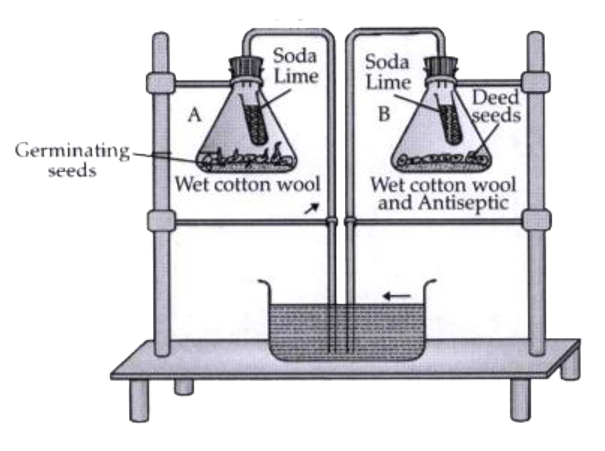
What is the aim of the experiment shown above?
View SolutionStudy the experimental set-up given below and answer the following questions :
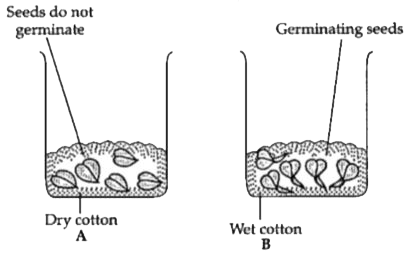
Which is the control set up and why?
View SolutionStudy the experimental set given below and answer the following questions :
Why is the coloured water risen in Tubing 1?
View SolutionStudy the experimental set-up given below and answer the following questions:
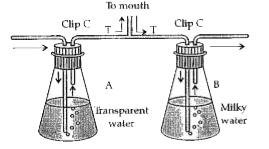
Which is the control set-up and why?
View SolutionStudy the experimental set-up given below and answer the following questions:
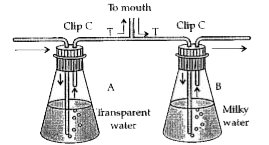
What is the aim of the experiment shown above ?
View SolutionStudy the experimental set given below and answer the following questions :
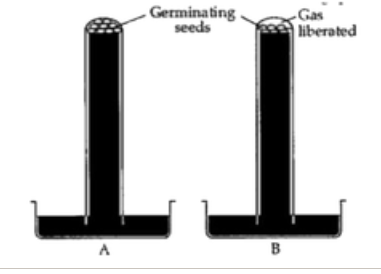
Which gas is liberated in this experiment?
View SolutionStudy the experimental set-up given below and answer the following questions:
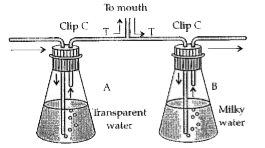
What is your observation for flasks .A. and .B.?
View Solution

